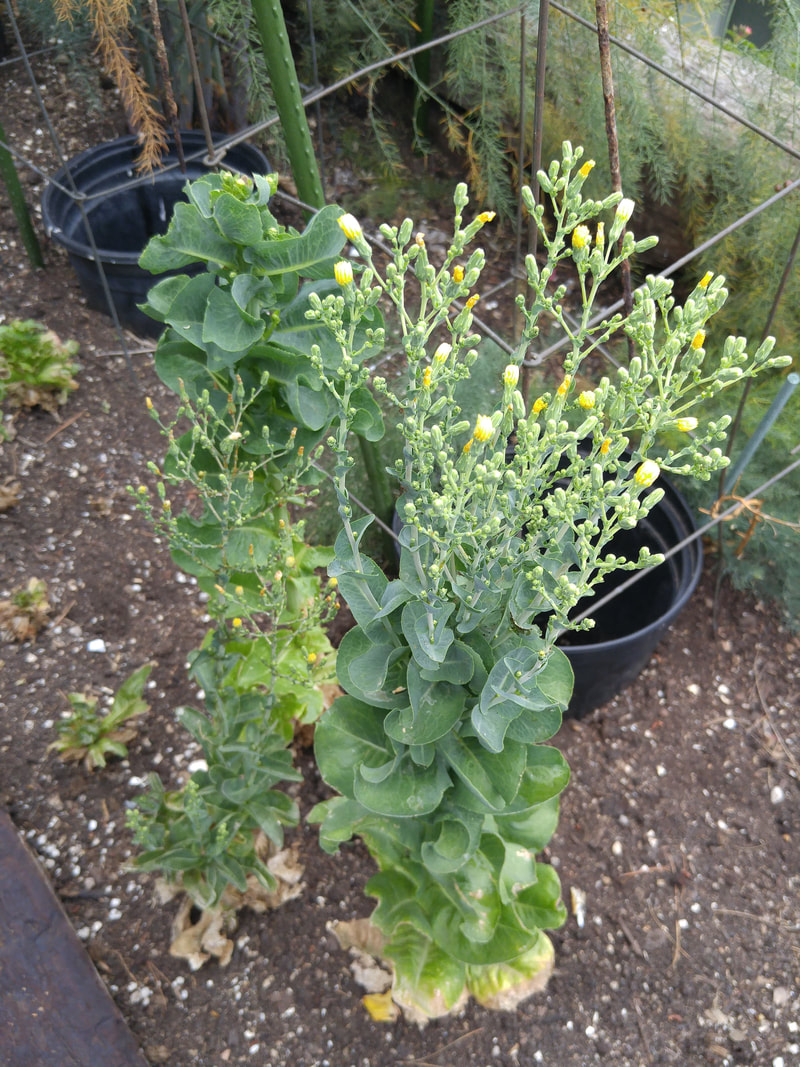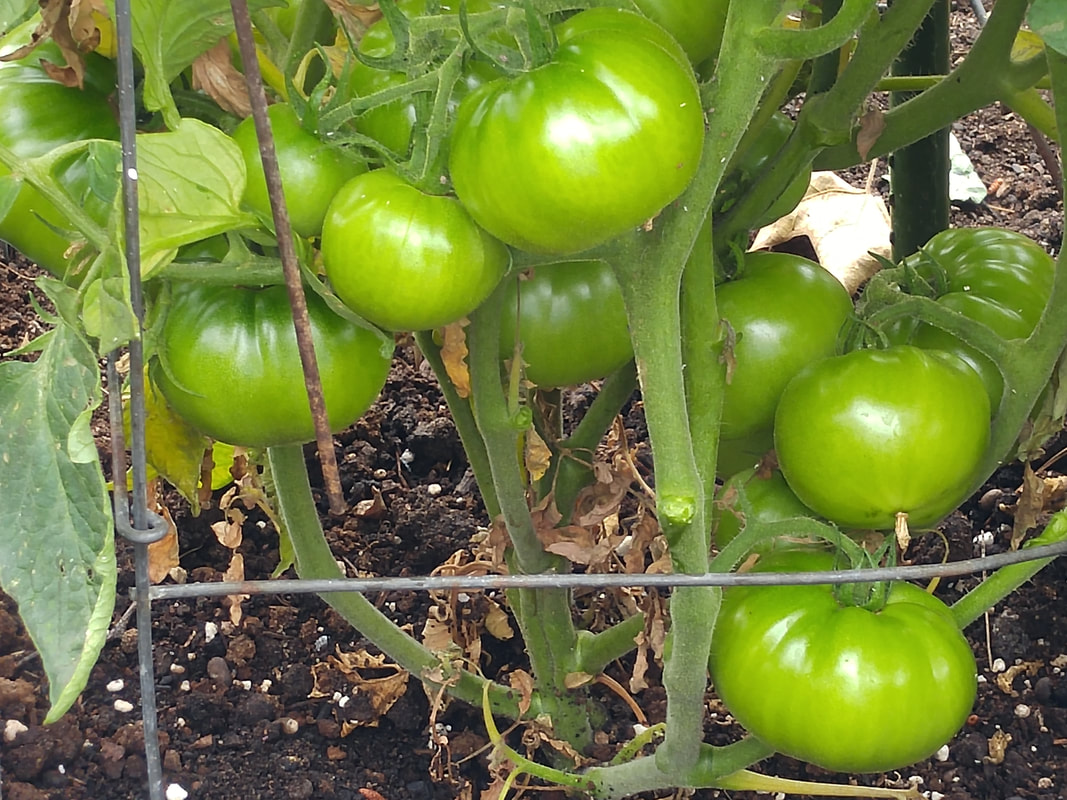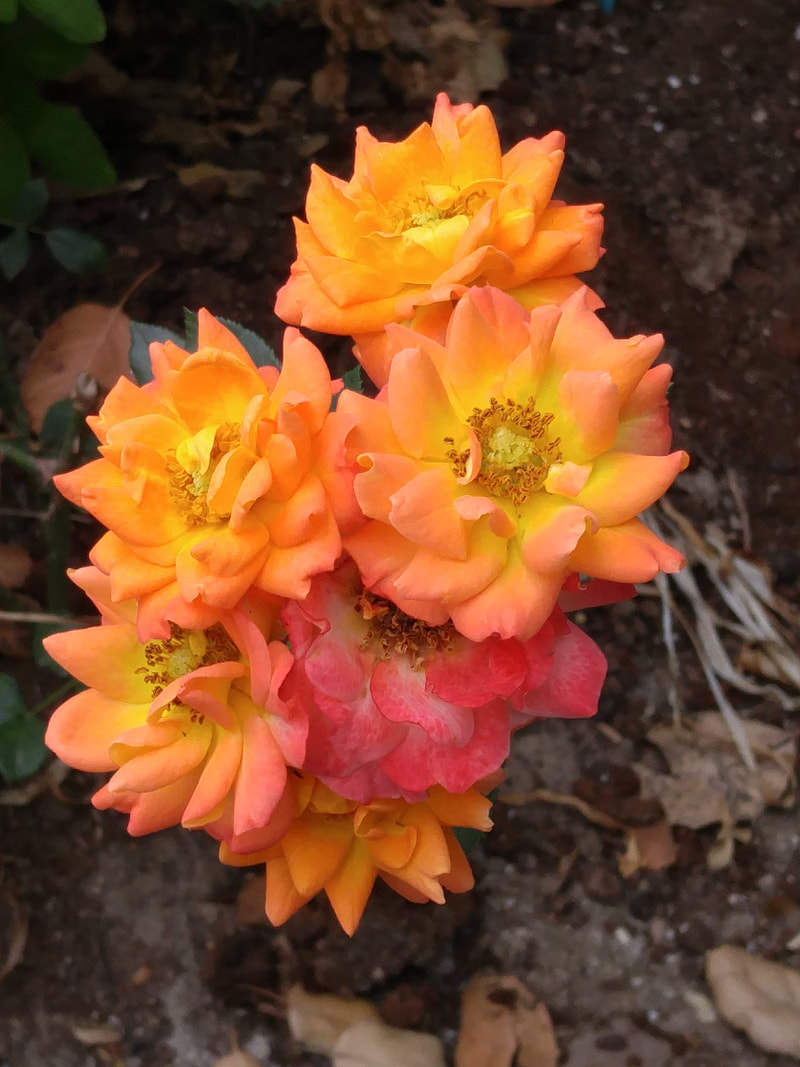| | Is your lettuce, spinach, parsley and cilantro bolting – sending up those tall stalks and flowering? They’re reacting to the suddenly hot weather, proceeding with their reproductive cycle by going to seed. This is just one result of our air temperatures suddenly rising 15-20 degrees hotter after a mild spring that went on very comfortably for months and months – even more so since we never really got any cold weather over our winter. Here’re some other things you may observe in your garden resulting from this instant Summer. Seeds Germinate Quickly Cucumber, squash, corn, melons and other warm-season-loving vegetable seeds you’ve just sown seem to literally pop out of the soil within a couple of days – and catch up quickly to the seedlings from the seeds that you’d sown a couple of weeks ago. This is why I no longer hurry earlier in the coolness to get my summer-loving crops to germinate and grow. I know that they’ll come up and thrive more readily if I just wait a couple of weeks until the soil warms up. This is also the reason that I no longer bother purchasing seedlings of these plants available commercially – they’ve been forced to sprout in a greenhouse and pumped up with fertilizer so they can be sold at nurseries, but then they have a supremely difficult time adapting to the very different environmental conditions in your garden – in most cases barely surviving. Instead, I sow two or three seeds in each hole, two inches apart, in well-amended soil, and water them in well. Then, if there are gaps in germination, I just put in a couple more seeds into each hole, and water them in, and these usually catch up with the original seedlings within 2 weeks. And, because they’ve germinated and grown up in my garden soil and environment, they’re extremely healthy and thriving. Check for Tomato End Rot Tomato fruits that set just after a sudden change in air temperatures may develop tomato end rot because the plants have been subjected to drought. During our long cool Spring – up until last week – plants have been growing nicely, and we haven’t been paying much attention to how frequently we’ve been watering because the plants looked fine. But, with this sudden increase of 15-20 degrees air temperature for days on end, we may have still felt comfortable, but the plants may be pulling more moisture from the soil than we’ve been providing by watering. Which means that the extremely last spot on the plant – the blossom end of the fruits – may be starting to dry out since not enough moisture is able to make its way that far away from the roots. This results in that brownish-gray scab. There’s nothing wrong with that scabby-looking thing – it’s not diseased or anything. If the fruit is already a good size, you can just let the fruit continue to ripen, harvest it, and cut off the scab before eating it. Or – if the fruit is still small – just pluck it off and toss it into the compost pile. And then change your watering pattern! Change Your Watering Pattern This is your timing cue to shift your watering pattern to “Summer” instead of “Spring” – more frequently, and deeply enough so the plants’ entire root systems are sufficiently supplied each time. How frequently and how deeply? This depends on the type of plant, your soil type, and the amount of organic matter that you’ve incorporated into the soil. Type of Plants and Their Root System Most vegetable plants’ root systems are in the top 6-18 inches of soil. More shallow plants’ roots that reach down about only one foot are beets, bok choy, carrots, garlic, lettuce, onions, radishes, spinach, strawberries, swiss chard. Deeper plants’ roots that reach down another foot are beans, broccoli, cabbage, cauliflower, cucumbers, eggplant, peas, peppers, squash. Some roots can reach even further down - to 3 feet - are blackberries, blueberries, potatoes, tomatoes. Which means that every time you irrigate, the water must reach down that deeply to keep those roots hydrated, absorbing nutrients, and developing strongly. Your Soil Type Sandy soil, with large chunks of rock and large pore spaces between them, will drain water very quickly, leaving root systems dry. Silty loam soil, with smaller pieces of mineral matter and equal-sized pore spaces, will hold water for enough time so plant roots can remain moist enough to pick up nutrients, but then the soil drains so roots can breathe. Clay soil, with tiny pieces of mineral matter and even tinier pore spaces between them, takes in water slowly because the pore spaces are so small – and easily runs off instead of entering the soil – and then holds onto to the water for a long time, and drains very slowly. Amount of Organic Matter in the Soil Organic matter incorporated into each of these types of soil will benefit all of them because it provides a “wrung-out sponge” lodged between soil pieces and pore spaces to help absorb the water in the first place and then keep the moisture always available to the roots. It’s the magic enabler in all soils! |
|
5 Comments
Cara
6/8/2018 10:39:38 am
Thank you for another great post, Yvonne! I especially like your comments about how cuke, squash and melon seeds catch up quickly to their older cousins when planted in this much warmer weather. Great tip!
Reply
6/25/2018 11:11:01 am
Hi, Cara --
Reply
The best television program is this one. It makes me think of enduring real love. I was sobbing uncontrollably as I watched this episode when they both broke up. Many times in their lives brought tears to my eyes. Just letting you know that I love this drama.
Reply
7/19/2022 05:18:23 pm
Watching this drama is like taking a sneak peak into the many stages of these characters' lives. The cinematography is stunning and done quite well. Each scene's lighting, color scheme, and setting were chosen with great care.
Reply
Leave a Reply. |
Categories |














 RSS Feed
RSS Feed